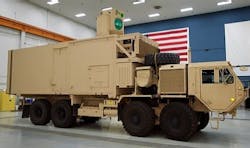Bluefin Robotics takes step toward autonomous adaptive collaboration among unmanned underwater vehicles
Bluefin researchers previously integrated the MOOS-IvP autonomy system onto two larger Bluefin-21 UUVs for underwater acoustic research. In this previous demonstration, experts used a separate computer for the payload and the MOOS-IvP software.
Later during the Bluefin-9 demonstration, researchers integrated the MOOS-IvP software into the existing UUV computer. Engineers interfaced he MOOS-IvP software with the UUV's Huxley software operating system to share core vehicle data, with the MOOS-IvP operating as a backseat driver, Bluefin officials say.
The MOOS-IvP software enables UUV users to develop new behaviors and smart payloads by instructing the vehicle to change its behavior based on payload data it collects in real-time, company officials say. Sponsoring this research project was the U.S. Office of Naval Research (ONR) in Arlington, Va., with supplemental support from Bluefin Robotics.
For more information contact Bluefin Robotics online at www.bluefinrobotics.com.
Related stories
-- Unmanned underwater vehicle machine autonomy seeks to detect and avoid fishing nets and kelp beds;
-- Sailors map the battlespace with unmanned underwater vehicles; and
-- Royal Australian Navy orders multiple autonomous underwater vehicles from Hydroid.
